Non-canonical Wnt signaling regulates junctional mechanocoupling during angiogenic collective cell migration
- PMID: 31246175
- PMCID: PMC6684320
- DOI: 10.7554/eLife.45853
Non-canonical Wnt signaling regulates junctional mechanocoupling during angiogenic collective cell migration
Abstract
Morphogenesis of hierarchical vascular networks depends on the integration of multiple biomechanical signals by endothelial cells, the cells lining the interior of blood vessels. Expansion of vascular networks arises through sprouting angiogenesis, a process involving extensive cell rearrangements and collective cell migration. Yet, the mechanisms controlling angiogenic collective behavior remain poorly understood. Here, we show this collective cell behavior is regulated by non-canonical Wnt signaling. We identify that Wnt5a specifically activates Cdc42 at cell junctions downstream of ROR2 to reinforce coupling between adherens junctions and the actin cytoskeleton. We show that Wnt5a signaling stabilizes vinculin binding to alpha-catenin, and abrogation of vinculin in vivo and in vitro leads to uncoordinated polarity and deficient sprouting angiogenesis in Mus musculus. Our findings highlight how non-canonical Wnt signaling coordinates collective cell behavior during vascular morphogenesis by fine-tuning junctional mechanocoupling between endothelial cells.
Keywords: adherens junctions; angiogenesis; cell biology; collective cell migration; developmental biology; human; mechanotransduction; mouse; non-canonical Wnt signaling; vinculin.
© 2019, Carvalho et al.
Conflict of interest statement
JC, IF, CF, AP, PB, MD, FV, NS, FC, CF No competing interests declared
Figures


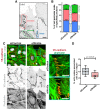
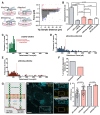
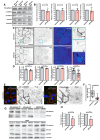







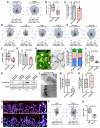



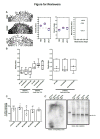
Similar articles
-
Epithelial protein lost in neoplasm (EPLIN) interacts with α-catenin and actin filaments in endothelial cells and stabilizes vascular capillary network in vitro.J Biol Chem. 2012 Mar 2;287(10):7556-72. doi: 10.1074/jbc.M111.328682. Epub 2011 Dec 22. J Biol Chem. 2012. PMID: 22194609 Free PMC article.
-
Vinculin controls endothelial cell junction dynamics during vascular lumen formation.Cell Rep. 2022 Apr 12;39(2):110658. doi: 10.1016/j.celrep.2022.110658. Cell Rep. 2022. PMID: 35417696
-
The Meckel-Gruber syndrome protein TMEM67 controls basal body positioning and epithelial branching morphogenesis in mice via the non-canonical Wnt pathway.Dis Model Mech. 2015 Jun;8(6):527-41. doi: 10.1242/dmm.019083. Epub 2015 Apr 7. Dis Model Mech. 2015. PMID: 26035863 Free PMC article.
-
[Non-canonical Wnt signaling and cellular responses.].Clin Calcium. 2019;29(3):291-297. doi: 10.20837/4201903291. Clin Calcium. 2019. PMID: 30814373 Review. Japanese.
-
Role of the Ror family receptors in Wnt5a signaling.In Vitro Cell Dev Biol Anim. 2024 May;60(5):489-501. doi: 10.1007/s11626-024-00885-4. Epub 2024 Apr 8. In Vitro Cell Dev Biol Anim. 2024. PMID: 38587578 Review.
Cited by
-
Vinculin strengthens the endothelial barrier during vascular development.Vasc Biol. 2023 Jan 27;5(1):e220012. doi: 10.1530/VB-22-0012. Print 2023 Jan 1. Vasc Biol. 2023. PMID: 36260739 Free PMC article.
-
Endothelial cells on the move: dynamics in vascular morphogenesis and disease.Vasc Biol. 2020 Jul 2;2(1):H29-H43. doi: 10.1530/VB-20-0007. eCollection 2020. Vasc Biol. 2020. PMID: 32935077 Free PMC article. Review.
-
A 96-wells fluidic system for high-throughput screenings under laminar high wall shear stress conditions.Microsyst Nanoeng. 2023 Sep 15;9:114. doi: 10.1038/s41378-023-00589-x. eCollection 2023. Microsyst Nanoeng. 2023. PMID: 37719414 Free PMC article.
-
Wnt/frizzled Signaling in Endothelium: A Major Player in Blood-Retinal- and Blood-Brain-Barrier Integrity.Cold Spring Harb Perspect Med. 2022 May 17;12(4):a041219. doi: 10.1101/cshperspect.a041219. Cold Spring Harb Perspect Med. 2022. PMID: 35074794 Free PMC article. Review.
-
Mechanome-Guided Strategies in Regenerative Rehabilitation.Curr Opin Biomed Eng. 2024 Mar;29:100516. doi: 10.1016/j.cobme.2023.100516. Epub 2023 Nov 30. Curr Opin Biomed Eng. 2024. PMID: 38586151 Free PMC article.
References
-
- Bazellières E, Conte V, Elosegui-Artola A, Serra-Picamal X, Bintanel-Morcillo M, Roca-Cusachs P, Muñoz JJ, Sales-Pardo M, Guimerà R, Trepat X. Control of cell-cell forces and collective cell dynamics by the intercellular adhesome. Nature Cell Biology. 2015;17:409–420. doi: 10.1038/ncb3135. - DOI - PMC - PubMed
-
- Berens P. CircStat : a MATLAB toolbox for circular statistics. Journal of Statistical Software. 2009;31 doi: 10.18637/jss.v031.i10. - DOI
-
- Broman MT, Kouklis P, Gao X, Ramchandran R, Neamu RF, Minshall RD, Malik AB. Cdc42 regulates adherens junction stability and endothelial permeability by inducing alpha-catenin interaction with the vascular endothelial cadherin complex. Circulation Research. 2006;98:73–80. doi: 10.1161/01.RES.0000198387.44395.e9. - DOI - PubMed
Publication types
MeSH terms
Substances
Grants and funding
LinkOut - more resources
Full Text Sources
Molecular Biology Databases
Research Materials
Miscellaneous

